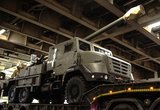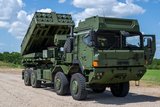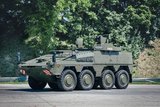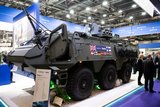General Dynamics UK cements Lockheed Martin UK's position in Scout team
Progressing with the demonstration phase of the Specialist Vehicle (SV) programme on behalf of its customer, the UK Ministry of Defence (MoD), prime contractor General Dynamics UK has awarded the contract for the manufacture of the turret for the Scout reconnaissance vehicle to its turret supplier, Lockheed Martin UK - Ampthill.
Commenting on the award of the contract to Lockheed Martin UK, Dr. Sandy Wilson, president and managing director of General Dynamics UK said, "Hot on the heels of the recently announced SDSR, General Dynamics UK is demonstrating that it is fully committed to working in partnership with the MoD to achieve its goals in a new working environment. The General Dynamics UK-led SV team will not only deliver innovation to the British Army in the shape of Scout and other SV variants, it will innovate to ensure the British taxpayer and Government get the best value for its money."
The contract will see Lockheed Martin UK deliver three turrets to General Dynamics UK for the Integration and Test programme in the Demonstration Phase for Scout. Thereafter, Lockheed Martin UK is expected to deliver the turret for the production phase of Scout. For the production phase the turret will be assembled and integrated onto the Scout platform at the Defence Support Group (DSG) facility at Donnington in the East Midlands. The manufacture contract for the Scout turret is likely to create approximately 500 jobs for Lockheed Martin and its supply chain partners in the UK.
The Scout reconnaissance vehicle will be a key variant in the British Army's SV fleet when it goes into service. It will serve alongside other SV variants including Protected Mobility, Repair and Recovery vehicles, all based on the common-base platform developed by General Dynamics.
The General Dynamics UK innovation of a 1.7 meter turret ring meant that the Scout turret could be designed to maximise space for the soldiers inside thereby optimising fightability. The large turret-ring diameter is much wider than older vehicles such as Warrior. This gives soldiers considerable room for modern display screens, comfort for long periods inside the turret and ease of movement, even wearing full body armour and future wearable systems. With the need for military electronics ever-expanding on operations, the turret allows significant room for new systems to be fitted without compromising the design of the vehicle. The turret will also feature the CT40 Cased Telescoped Cannon System.
British troops using the SV will have the best protection available in this vehicle class, both as it is delivered and as it grows to meet future threats. The vehicle will be immediately capable of delivering load-carrying growth potential of up to 42 tonnes thanks to a modern, proven drivetrain. This means that SV is capable of being equipped to meet future threats likely to appear over its entire 30 year life, without the need to upgrade its engine or transmission during that time. Finally, 80% of SV's full rate production will be based in the UK, and is likely to secure or create over 10,600 jobs for British workers.
This contract is the first of a number of supplier contracts to be announced by General Dynamics UK over the next few weeks as it quickly progresses with work on the demonstration phase of the SV programme.
Source: General Dynamics
More from Land Warfare
-
![Lockheed Martin to look further afield for GMARS rocket system opportunities]()
Lockheed Martin to look further afield for GMARS rocket system opportunities
The HX truck is already in use in many NATO and allied countries around the world as a logistics vehicle and carrier for high-value systems, including missile firing weapons, so its use for the Global Mobile Artillery Rocket System makes logistical sense.
-
![Beyond Survivability: How Active Protection Systems Are Empowering Commanders (Podcast)]()
Beyond Survivability: How Active Protection Systems Are Empowering Commanders (Podcast)
As threats diversify and intensify, APS are proving essential not just for vehicle protection but also for enhancing operational freedom, effectiveness and mission success in contested environments.
-
Medium knocked out of British Army LMP, with CAVS as heavyweight champion
As the British Army seeks to modernise and consolidate its diverse vehicle fleet, yet another change in direction is underway.
























